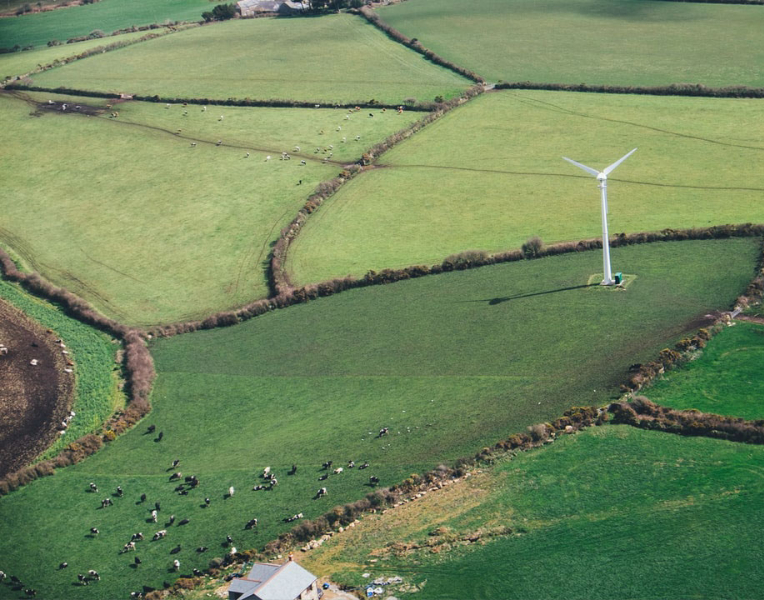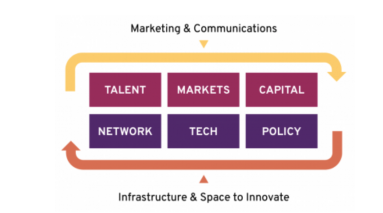The CORE Cleantech Cluster Initiative hosted a roundtable discussion with a select group of leaders from First Nations communities known for their interest and expertise in the clean technology sector.
The event was held in Richmond, BC on March 11, 2020.
Four Our Future Presentation
After a brief welcome from Foresight Director of Strategy and Partnerships, Catriona Power, the afternoon started with a presentation from Squamish Nation hereditary Chief Gilbert "Gibby" Jacob and Tamara Goddard, CEO of Four Our Future Indigenous Economics.
Four Our Future is an economic development platform that encourages economic development to proceed through the lens of four pillars of people development and four pillars of land preservation. This economic model is important to look at when evaluating cleantech projects as it takes a holistic and long-term approach.
Cleantech is important to First Nation communities as clean tech could potentially influence all four of the land pillars: water security, housing security, power security and food security. The concept of security is important to this model - it ensures decisions are made with the long term vision of the community in mind, and explains why ownership or partial ownership of technology is important when a First Nations community invests in a clean technology. Ownership provides security and autonomy.

Discussion Question 1: What are the needs of communities that can be addressed using cleantech?
There were a number of issues and needs that the group felt could be addressed using cleantech solutions. As mentioned, all of the four pillars of land pillars, water, housing, power and food could be impacted by cleantech.
The uses and applications of cleantech in these four fundamental areas are varied. For example, digital technologies including AI/quantum computing could be used to help communities think through complex issues such as infrastructure analysis, land usage, geothermal monitoring, forest fire monitoring and studies, health and environmental monitoring. Renewable energy and green building are especially important for remote communities to reduce the use of diesel fuel and provide more reliable and cost-effective power.
A centrally stored database of information is essential for First Nations communities. A baseline analysis of the land, the environment and community shared knowledge is important, for making decisions now that could impact generations to come.
Discussion Question 2: Is there a need for awareness or capacity building to encourage adoption?
The answer to this question was an unanimous “YES”.
Discussion Question 3: What are the activities for capacity building reflecting on the ecosystem framework?

Chief Gibby said that in order to have meaningful conversations with cleantech companies, he is looking for four key things:
- Financial share/benefit
- Training & employment
- Community Benefits (e.g. bursary to young people)
- Procurement
For new, unproven technologies, there should be a system to de-risk the investment, so that the government takes on much of the initial risk. There also needs to be capital raising/ investment structures that do not restrict commercialization opportunities.
Projects should benefit the whole community over the long term. For example, the trades training program the Squamish Nation launched with Kwantlen Polytechnic University (KPU) included a building that they can now use to collect market rent for the reserve. Another example is the Black Tower at Park Royal, West Vancouver on Squamish territory land, which is now used as a central office hub for First Nations organizations and businesses.
Actions, Challenges & Solutions
Challenge 1: There is currently a challenge with technology vendors selling to First Nation communities. One of the key gaps preventing faster adoption of cleantech solutions is the ability and expertise to vet these technologies - the groups simply don’t have the resources.
Solution: It would be a good idea to develop an exclusive, safe, hub of companies that have been vetted and follow an Indigenous Economic Development lens. Activities that support this bridging could include networking events, discussion groups, educational workshops, a regular series of webinars - activities that would offer a structure for introducing ‘pre-vetted’ cleantech companies to First Nation community and economic development leaders -- a grassroots movement run by a coalition of people involved in looking at major projects through this lens.
Challenge 2: How to align current band budgets with the purchase cost of cleantech solutions?
Solution:A co-op style purchasing group would be helpful in order to reduce costs for purchasing equipment, especially for major infrastructure projects. (This type of purchasing concept already exists for building materials, but could be expanded for cleantech).
Challenge 3: Facilitate knowledge of and exposure to cleantech solutions
Solution: Another idea/discussion centred around education and marketing of cleantech - there is a need for storytelling around successful projects, to encourage discussion and knowledge sharing around best practices, and to share information with B.C. First Nations groups through engagement with CORE Cleantech Cluster.
Challenge 4: Understand First Nations values and build trust
Solution: Partnerships, First Nations values and transparent communication are vital, not only between First Nations Groups, but also for the CORE Cleantech cluster as we move forward. Chief Gibby also mentioned partnership building with the First Nations Technology Council as an important success factor for a Cleantech Cluster, as they are a beachhead for understanding and assessing technology that would be of benefit to First Nations communities. CORE should also maintain contact with Cole Sayers, Coordinator of the BC Indigenous Clean Energy Initiative (BCICEI).
Challenge 5: Re-thinking Sunset Industries and Refurbishing infrastructure. There is an additional challenge in that some industries are rapidly changing, and in some cases leaving behind old facilities and infrastructure.
Solution: Looking at innovative re-use or retrofitting/refurbishing of aging infrastructure. Focus on how existing resources can be leveraged to support cleantech. There is potential for Indigenous owned rail, land, hydro infrastructure that supports cleantech and the future economy. For example, pulp and paper mills now utilizing their infrastructure for wood fibre and exploring bio-product opportunities.
Thank You!
Thanks to Hereditary Chief Gibby from Squamish Nation and Tamara Goddard from Four Our Future for their presentation and leadership in this event, to the event facilitator Dillon Johnson, with Temixw Planning and Lisa Wolfe from SpiritWolfe Consulting & Associates for organizing the event.



